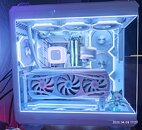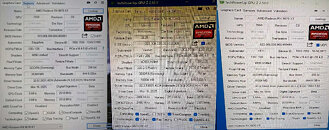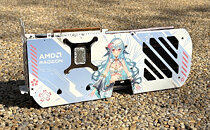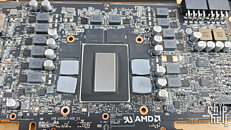
AMD Radeon RX 9060 XT Graphics Card for Maxed Out 1080p Gameplay Goes on Sale
AMD today released to market the Radeon RX 9060 XT, its third graphics card model from the Radeon RX 9000 series, powered by RDNA 4 graphics architecture. This card debuts the new 4 nm "Navi 44" silicon, with over 2x the transistor count increase over the "Navi 33" chip powering the RX 7600. This is because AMD sized up the silicon for the singular purpose of winning in key sub-$400 price-points, against the NVIDIA GeForce RTX 5060 series, specifically the RTX 5060, and the RTX 5060 Ti 8 GB. The RX 9060 XT comes in 8 GB and 16 GB models, with the 8 GB model priced at $300, clashing with the RTX 5060, and the 16 GB model priced at a competitive $350, undercutting the RTX 5060 Ti 8 GB, which starts at $380. For $30 less, AMD is offering twice the memory size, for future-proofing and lower ray tracing performance cost.
The RX 9060 XT maxes out the 4 nm "Navi 44," enabling all 32 CU, for 2,048 stream processors, 64 AI accelerators, 32 RT accelerators, and 128 TMUs, besides 64 ROPs. Each of the RDNA 4 RT accelerators comes with two intersection units, and several other hardware-level improvements, which is how the company is able to yield a near doubling in ray tracing performance over RDNA 3. AMD is sticking to GDDR6 as the memory standard, the RX 9060 XT gets 8 GB or 16 GB of 20 Gbps GDDR6 memory across a 128-bit memory bus, for 320 GB/s of bandwidth. This is low compared to the 448 GB/s NVIDIA achieved on the RTX 5060 series by switching to 28 Gbps GDDR7, but AMD claims that the memory management advancements it made with RDNA 4 should provide a generational uplift in memory sub-system performance. A purely partner-driven launch, the RX 9060 XT should be available as custom designs from ASUS, ASRock, GIGABYTE, Sapphire, PowerColor, XFX, and more.
Be sure to check out our reviews of: Sapphire RX 9060 XT 16 GB NITRO+ | ASRock RX 9060 XT 16 GB Steel Legend OC | XFX RX 9060 XT 16 GB SWIFT OC | ASUS RX 9060 XT 16 GB Prime OC
The RX 9060 XT maxes out the 4 nm "Navi 44," enabling all 32 CU, for 2,048 stream processors, 64 AI accelerators, 32 RT accelerators, and 128 TMUs, besides 64 ROPs. Each of the RDNA 4 RT accelerators comes with two intersection units, and several other hardware-level improvements, which is how the company is able to yield a near doubling in ray tracing performance over RDNA 3. AMD is sticking to GDDR6 as the memory standard, the RX 9060 XT gets 8 GB or 16 GB of 20 Gbps GDDR6 memory across a 128-bit memory bus, for 320 GB/s of bandwidth. This is low compared to the 448 GB/s NVIDIA achieved on the RTX 5060 series by switching to 28 Gbps GDDR7, but AMD claims that the memory management advancements it made with RDNA 4 should provide a generational uplift in memory sub-system performance. A purely partner-driven launch, the RX 9060 XT should be available as custom designs from ASUS, ASRock, GIGABYTE, Sapphire, PowerColor, XFX, and more.
Be sure to check out our reviews of: Sapphire RX 9060 XT 16 GB NITRO+ | ASRock RX 9060 XT 16 GB Steel Legend OC | XFX RX 9060 XT 16 GB SWIFT OC | ASUS RX 9060 XT 16 GB Prime OC

























































































